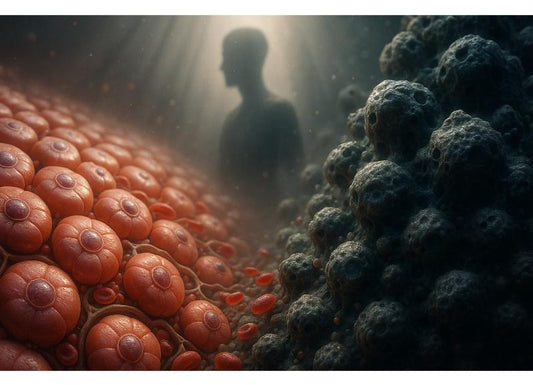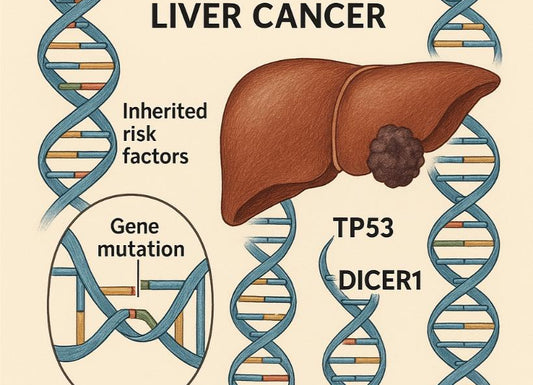Direct Bilirubin Normal Range—What Does It Mean for Your Health?
 Written By
Jaclyn P. Leyson-Azuela, RMT, MD, MPH
Written By
Jaclyn P. Leyson-Azuela, RMT, MD, MPH

Direct bilirubin is a measurement that demonstrates how well your body is processing waste. When direct bilirubin normal range is maintained, your body is clearing this metabolic waste efficiently as it should. However, high levels may signal that the liver is struggling. It may be related to liver inflammation, bile duct blockage, or other issues that need medical attention.
Understanding your bilirubin numbers helps you take charge of your liver health and use at-home test strips confidently. This article will help you in understanding bilirubin and support your proactivity when it comes to your overall health, not only liver health.
Key Insights
-
Normal direct bilirubin in adults: 0.0–0.3 mg/dL (0–5.1 μmol/L).
-
High bilirubin can cause jaundice, dark urine, or pale stools.
-
Elevated levels may point to liver disease, bile duct obstruction, or medication effects.
-
Newborns often show higher temporary bilirubin due to immature liver function.
-
At-home urine strips offer convenient early screening for bilirubin.
-
Persistent symptoms or abnormal results should be checked by a doctor.
Why Do Doctors Measure Direct Bilirubin?
Doctors measure direct bilirubin to assess liver function and detect bile flow issues. It shows how well your body removes waste from red blood cells. This test gives insight to whether your liver and bile ducts are working properly.
How is direct bilirubin produced in the body?

Direct bilirubin, also called conjugated bilirubin, forms when the liver processes old red blood cells (RBCs), which is the major source of about 80% of total bilirubin.
-
When RBCs break down, they release heme
-
Heme is then converted to indirect bilirubin, which will travel towards the liver
-
The liver then converts it to direct bilirubin by attaching it to glucuronic acid (hence the term conjugated)
-
This process makes bilirubin water-soluble so it can exit the body through bile and stool
When this system runs smoothly, bilirubin stays within the healthy range. If it increases, your skin or eyes may turn yellow, which is a manifestation of jaundice.
What does direct bilirubin tell us about liver function?
Direct bilirubin measures how efficiently the liver excretes processed waste.
-
Normal levels suggest healthy liver cells and bile flow
-
Elevated levels often indicate inflammation, blockage, or injury to liver tissue
-
It also helps doctors distinguish between pre-hepatic, hepatic, and post-hepatic causes of jaundice
Lab reports often include total bilirubin, which combines direct and indirect forms. The proportion of each helps determine whether the issue lies inside or outside the liver.
What Is a Healthy Direct Bilirubin Range for Adults, Children, and Newborns?
It is normal to ask what a normal bilirubin level looks like. For most healthy adults, direct bilirubin stays low usually at levels less than 0.3 mg/dL. Different ages have slightly different normal ranges.
Adult reference range in mg/dL & μmol/L
Most labs define reference range as:
-
Healthy adults/older children: <0.3 mg/dL
However, you have to take into account that newborn babies and even pregnant women have different levels. You also need to take into consideration the slight differences between laboratories. The slight variation in the reference ranges can be attributed to the method used by the lab. The main goal is the consistency of the results (shown as patterns) over time.
Pediatric and neonatal reference ranges
Like mentioned above, newborns will have different bilirubin levels and shortly after birth it may even increase. There are two types of jaundice in the newborn, namely physiologic and pathologic.
Normal total bilirubin reference levels include:
-
Neonates at 25-48 hrs after birth: <15 mg/dL
-
Neonates at 49-72 hrs after birth: <18 mg/dL
-
Neonates >72 hrs after birth: <20 mg/dL
For infants who developed jaundice (yellowish discoloration) within 24 hours, this condition is already called pathologic jaundice. Since jaundice that occurs after 24 hours is often physiologic due to the breakdown of RBCs. This is the reason why pediatricians are often on the lookout for jaundice in the neonatal period as it could result in a life-threatening condition.

Are there differences by gender or ethnicity?
Yes, there are slight variations brought by ethnicity. In one study, higher bilirubin levels are found among blacks than those who are whites and Latin Americans. It is also found to be significantly higher in men than in women and is even influenced by smoking status.
Certain genetic backgrounds also influence the differences of bilirubin levels, such as Gilbert’s syndrome, which has been found to be predominant among South Asian individuals occurring up to 20%.
However, normal reference intervals apply broadly across ethnic groups. Lab interpretation must always consider different factors including:
-
Overall health
-
Diet
-
Medications taken
What Do High Direct Bilirubin Levels Mean—Should You Be Concerned?
High direct bilirubin can mean trouble with bile flow or liver processing. When your body can’t excrete bilirubin properly, it builds up, which results in yellowish discoloration of your eyes and skin (as one of the physical manifestations).
Symptoms associated with high bilirubin
Common signs associated with high bilirubin levels include:
-
Jaundice
-
Dark urine
-
Pale stools
-
Fatigue
-
Nausea
-
Abdominal discomfort under the right rib cage
-
Itchy skin
Even when symptoms are considered mild, blood work confirming elevation of bilirubin warrants further medical evaluation and attention.
Common clinical causes and disease associations
There are several conditions that can cause direct bilirubin to increase. It includes:
-
Liver inflammation (e.g., fatty liver, hepatitis)
-
Bile duct obstruction (e.g., tumors or gallstones)
-
Cirrhosis or scarring of liver tissue
-
Genetic disorders (e.g., Dubin-Johnson or Rotor Syndrome)
-
Medication side effects, particularly from antibiotics, birth control, or anabolic steroids
Your doctor will use bilirubin levels along with liver enzymes like AST, ALT, ALP, and GGT to obtain a complete picture of your condition and to find the root cause.
When is bilirubin considered "dangerously high"?
Most clinicians consider >2.0 mg/dL (34 μmol/L) significantly elevated for direct bilirubin. In fact, levels of about 2.0–3 mg/dL can already manifest as jaundice, which is a visible sign that bilirubin is high. This can be seen in conditions such as liver or bile duct obstruction, which needs urgent medical attention.
Rapidly rising bilirubin levels with other abnormal enzymes can signal acute liver failure, which needs emergency care.
How Accurate Are At-Home Test Kits for Bilirubin Detection?

At-home test kits allow early detection of bilirubin changes, especially through urine. They help you keep track of liver function between doctor visits.
Urine vs. blood testing for bilirubin
-
Blood tests measure both total and direct bilirubin precisely
-
Urine test strips detect conjugated (direct) bilirubin that spills into urine when liver function is impaired
-
Bilirubin in the form of urobilinogen normally should not appear in the urine. So, its presence often signals bile duct blockage or liver stress
Urine testing gives a quick indicator but not a full diagnostic picture. So, it should not be used as a replacement for standard laboratory testing.
Test Strips and Their Limitation
At-home urine bilirubin test strips are available in the US, which you can use for screening use.
-
The strips change in color when bilirubin (if present in the urine) reacts with the reagent found in the strip
-
The result is often available for reading after a few minutes
-
There are also kits with subscription-based smartphone app for digital reading to enhance accuracy and track results over time
Limitations of the Test Strips
-
False positives may occur (as they do in the lab setting) especially when the urine is dark-colored or concentrated
-
False negatives may also occur, which could be because of old or improperly stored test strips
-
These test kits cannot distinguish between mild or severe liver dysfunction
Still, these strips give an early warning sign when coupled with medical professional evaluation and follow-up.
Who should use at-home kits?
You may benefit from routine at-home urine test kits if you:
-
Have chronic liver disease or take medications
-
Recently had hepatitis, gallbladder issues, or alcohol-related liver stress
-
Want to proactively monitor your liver health alongside a wellness plan
Home testing offers convenience and privacy, helping you spot changes early and share results with your healthcare provider.
What Causes Changes in Direct Bilirubin Levels?
Changes in bilirubin often reflect how your liver and bile system respond to everyday factors. Diet, medication, and health all play roles.
Genetics, medications, lifestyle, and disease factors
Factors that can influence the level of bilirubin, whether increase or decrease, include:
-
Genetic traits (e.g., Gilbert syndrome)
-
Medications
-
Alcohol use or high-fat diets
-
Viral hepatitis and liver inflammation
-
Gallstones blocking bile ducts
-
Rapid RBC breakdown or turnover in anemia or transfusion reactions
Maintaining hydration, balanced nutrition, and limited alcohol can help stabilize your bilirubin levels.

When Should You Talk to a Doctor About Your Bilirubin Results?
You should talk to your doctor when bilirubin is consistently high or symptoms appear. Professional evaluation is important for accurate diagnosis and treatment.
Warning signs requiring medical attention
Seek care immediately if you notice:
-
Yellow skin or eyes lasting more than two days
-
Persistent fatigue, nausea, or loss of appetite
-
Swelling or pain under the ribs
-
Dark urine or pale stools
-
Confusion or unusual sleepiness
These may indicate significant liver or bile duct issues that need testing.
Recommended follow-up and testing procedures
Doctors often recommend:
-
Repeat bilirubin testing to confirm the trends
-
Full liver function test panel (e.g., ALT, AST, ALP, and GGT)
-
Ultrasound or CT-Scans to visualize the liver and the bile ducts
-
Hepatitis screening if inflammation is suspected
-
Review of medications and supplements
At-home test results should always be shared with your provider to guide next steps.
Related Resources
Bilirubin in Urine: Causes, Symptoms, Detection, and Treatment
What vitamins support liver health?
Quick Summary Box
-
Direct bilirubin measures how well your liver removes processed waste
-
Normal adult range: 0.0–0.3 mg/dL (0–5.1 μmol/L).
-
High levels may signal liver inflammation, bile duct blockage, or medication effects.
-
Newborns can have temporarily higher bilirubin as their liver develops.
-
At-home urine test strips provide early, convenient bilirubin screening.
-
Always consult a doctor if you have jaundice, dark urine, or abnormal test results.
References
Carmel, R., Wong, E. T., Weiner, J. M., & Johnson, C. S. (1985). Racial differences in serum total bilirubin levels in health and in disease (pernicious anemia). JAMA, 253(23), 3416–3418. https://pubmed.ncbi.nlm.nih.gov/3999324/
Coucke, E. M., & Lopez, P. P. (2022, November 26). Biliary Obstruction. Nih.gov; StatPearls Publishing. https://www.ncbi.nlm.nih.gov/books/NBK539698/
De Silva, A. P., Nuwanshika, N., Niriella, M. A., & de Silva, H. J. (2025). Gilbert’s syndrome: The good, the bad and the ugly. World Journal of Hepatology, 17(2). https://doi.org/10.4254/wjh.v17.i2.98503
Joseph, A., & Samant, H. (2023). Jaundice. PubMed; StatPearls Publishing. https://www.ncbi.nlm.nih.gov/books/NBK544252/
Kalakonda, A., John, S., & Jenkins, B. A. (2022). Physiology, Bilirubin. National Library of Medicine; StatPearls Publishing. https://www.ncbi.nlm.nih.gov/books/NBK470290/
Mount Sinai. (2024). Bilirubin blood test Information | Mount Sinai - New York. Mount Sinai Health System. https://www.mountsinai.org/health-library/tests/bilirubin-blood-test
Porter, M. L., & Dennis, B. L. (2002). Hyperbilirubinemia in the Term Newborn. American Family Physician, 65(4), 599–607. https://www.aafp.org/pubs/afp/issues/2002/0215/p599.html
Roche, S. P., & Kobos, R. (2004). Jaundice in the Adult Patient. American Family Physician, 69(2), 299–304. https://www.aafp.org/pubs/afp/issues/2004/0115/p299.html
Štimac, D., Milić, S., Dintinjana, R. D., Kovač, D., & Ristić, S. (2002). Androgenic/Anabolic Steroid-Induced Toxic Hepatitis. Journal of Clinical Gastroenterology, 35(4), 350–352. https://doi.org/10.1097/00004836-200210000-00013
Tholey, D. (2023, September). Jaundice - Hepatic and Biliary Disorders. MSD Manual Professional Edition. https://www.msdmanuals.com/professional/hepatic-and-biliary-disorders/approach-to-the-patient-with-liver-disease/jaundice
Tripathi, N., & Jialal, I. (2020). Conjugated Hyperbilirubinemia. PubMed; StatPearls Publishing. https://www.ncbi.nlm.nih.gov/books/NBK562172/
Zucker, S. D., Horn, P. S., & Sherman, K. E. (2004). Serum bilirubin levels in the U.S. population: Gender effect and inverse correlation with colorectal cancer. Hepatology, 40(4), 827–835. https://doi.org/10.1002/hep.20407

Jaclyn P. Leyson-Azuela, RMT, MD, MPH, is a licensed General Practitioner and Public Health Expert. She currently serves as a physician in private practice, combining clinical care with her passion for preventive health and community wellness.



